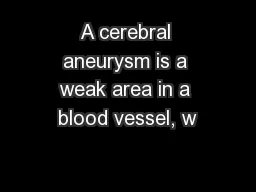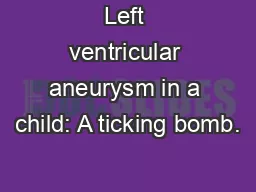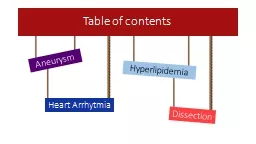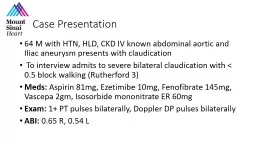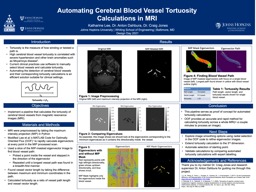PPT-A cerebral aneurysm is a weak area in a blood vessel, w
Author : danika-pritchard | Published Date : 2017-12-25
Ruptured Brain aneurysms occur in over 30000 people within the US alone primarily affecting women causing onset nausea vomiting stiff neck loss of consciousness
Presentation Embed Code
Download Presentation
Download Presentation The PPT/PDF document "A cerebral aneurysm is a weak area in a ..." is the property of its rightful owner. Permission is granted to download and print the materials on this website for personal, non-commercial use only, and to display it on your personal computer provided you do not modify the materials and that you retain all copyright notices contained in the materials. By downloading content from our website, you accept the terms of this agreement.
A cerebral aneurysm is a weak area in a blood vessel, w: Transcript
Download Rules Of Document
"A cerebral aneurysm is a weak area in a blood vessel, w"The content belongs to its owner. You may download and print it for personal use, without modification, and keep all copyright notices. By downloading, you agree to these terms.
Related Documents

